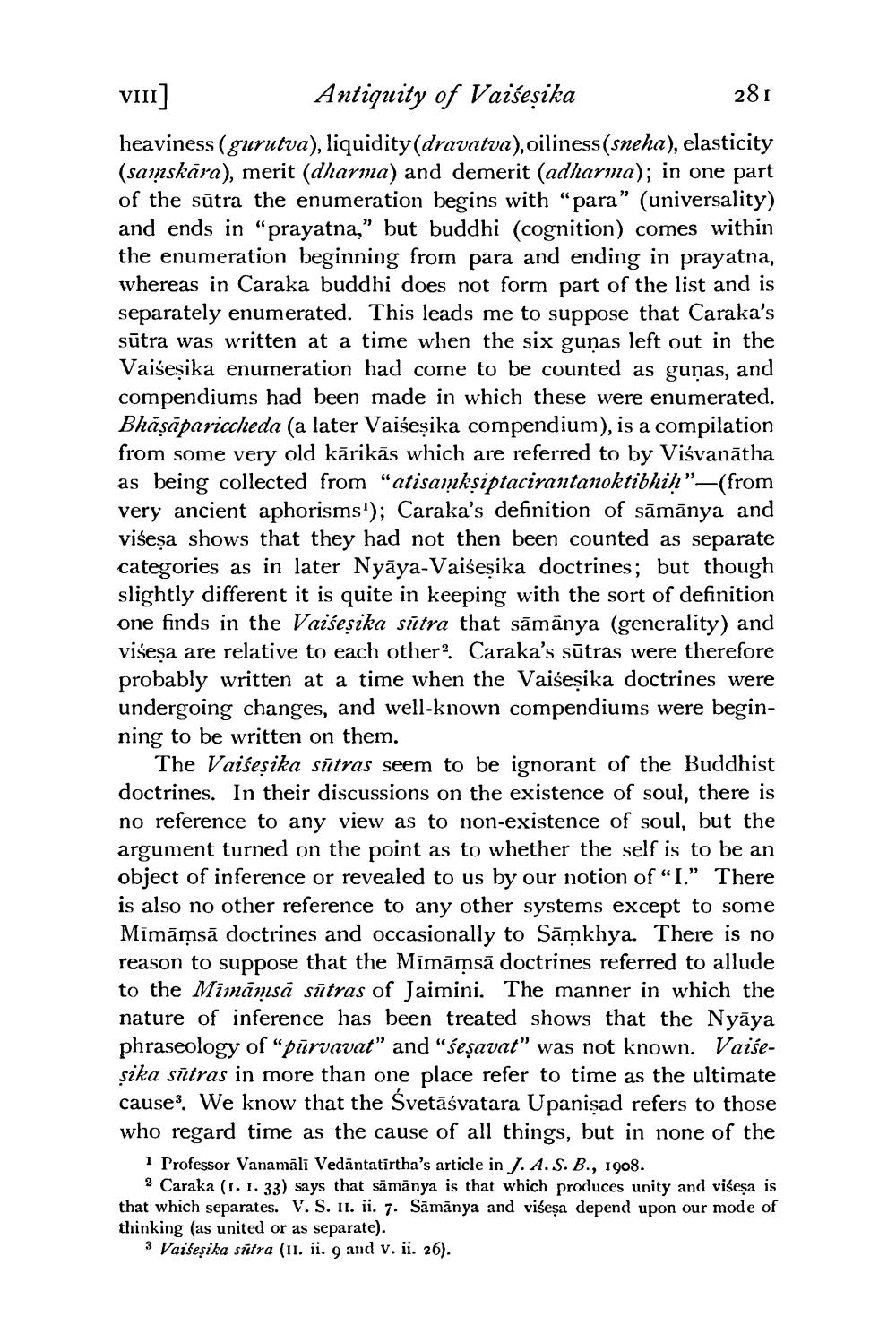________________
VIII]
Antiquity of Vaišeșika
281
heaviness (gurutva), liquidity (dravatva), oiliness(sneha), elasticity (saiņskāra), merit (dharma) and demerit (adharma); in one part of the sūtra the enumeration begins with “para” (universality) and ends in "prayatna," but buddhi (cognition) comes within the enumeration beginning from para and ending in prayatna, whereas in Caraka buddhi does not form part of the list and is separately enumerated. This leads me to suppose that Caraka's sūtra was written at a time when the six gunas left out in the Vaiseșika enumeration had come to be counted as gunas, and compendiums had been made in which these were enumerated. Bhasapariccheda (a later Vaisesika compendium), is a compilation from some very old kārikās which are referred to by Viśvanātha as being collected from "atisamksiptacirantanoktibhiḥ”—(from very ancient aphorisms'); Caraka's definition of sāmānya and visesa shows that they had not then been counted as separate categories as in later Nyāya-Vaišeșika doctrines; but though slightly different it is quite in keeping with the sort of definition one finds in the Vaiseșika sūtra that sămânya (generality) and višesa are relative to each other?. Caraka's sūtras were therefore probably written at a time when the Vaišesika doctrines were undergoing changes, and well-known compendiums were beginning to be written on them.
The Vaiseșika sūtras seem to be ignorant of the Buddhist doctrines. In their discussions on the existence of soul, there is no reference to any view as to non-existence of soul, but the argument turned on the point as to whether the self is to be an object of inference or revealed to us by our notion of "I." There is also no other reference to any other systems except to some Mimāmsā doctrines and occasionally to Sāmkhya. There is no reason to suppose that the Mimāmsā doctrines referred to allude to the Mimāmsā sūtras of Jaimini. The manner in which the nature of inference has been treated shows that the Nyāya phraseology of “pūrvavat" and "sesavat" was not known. Vaiseșika sūtras in more than one place refer to time as the ultimate cause? We know that the Svetāśvatara Upanişad refers to those who regard time as the cause of all things, but in none of the
i Professor Vanamāli Vedāntatirtha's article in J. A.S.B., 1908.
2 Caraka (1. 1. 33) says that sāmānya is that which produces unity and viseșa is that which separates. V. S. 11. ii. 7. Sāmānya and višeșa depend upon our mode of thinking (as united or as separate).
3 Vaiseșika sätra (11. ii. 9 and v. ii. 26).




